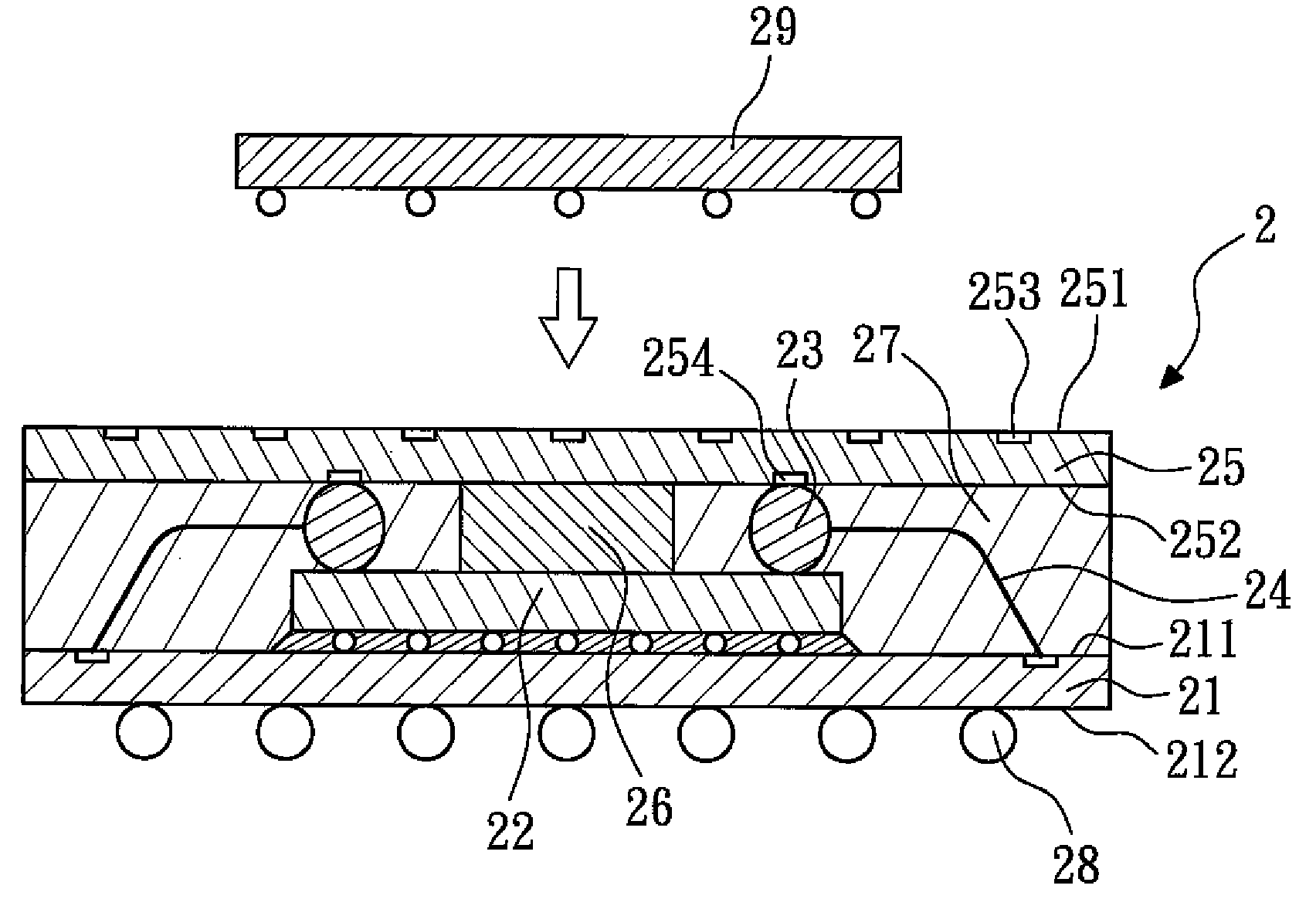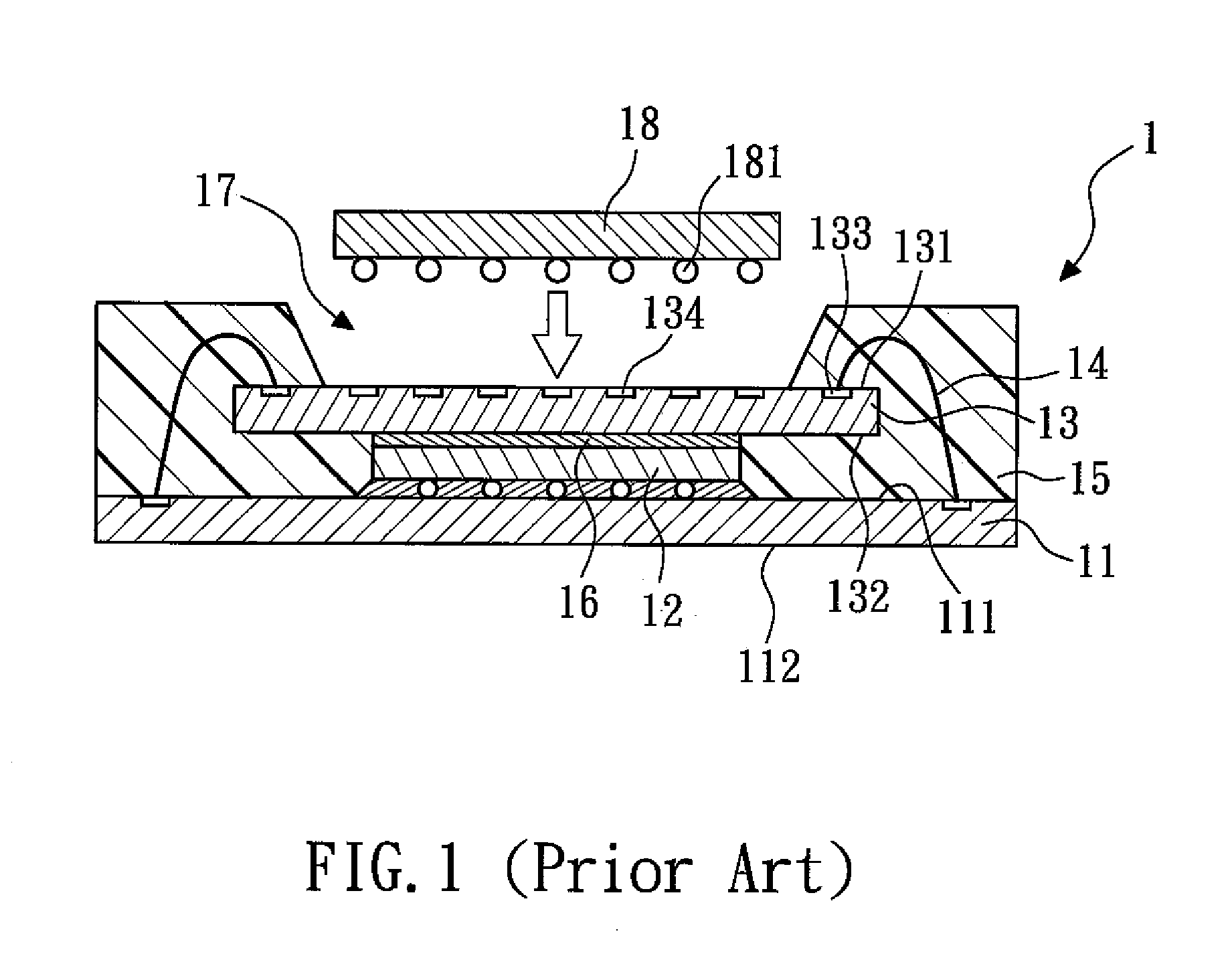Stackable semiconductor package and the method for making the same
a technology of semiconductor packaging and stacking pads, which is applied in the direction of semiconductor devices, semiconductor/solid-state device details, electrical apparatus, etc., can solve the problems of cracking of second substrates b>13/b>, and achieve the effect of preventing the contamination of the first bonding pad
- Summary
- Abstract
- Description
- Claims
- Application Information
AI Technical Summary
Benefits of technology
Problems solved by technology
Method used
Image
Examples
first embodiment
[0024]FIG. 2 shows a schematic cross-sectional view of a stackable semiconductor package according to the present invention. The stackable semiconductor package 2 comprises a first substrate 21, a semiconductor device 22, a plurality of stud bumps 23, a plurality of first wires 24, a second substrate 25, a support compound 26, a molding compound 27, and a plurality of solder balls 28.
[0025]The first substrate 21 has a first surface 211 and a second surface 212. The semiconductor device 22 is disposed on the first surface 211 of the first substrate 21, and electrically connected to the first surface 211 of the first substrate 21. In this embodiment, the semiconductor device 22 is a chip, and is attached to the first surface 211 of the first substrate 21 by flip-chip bonding.
[0026]The stud bumps 23 (for example, gold stud bumps) are disposed above the semiconductor device 22. In this embodiment, the stud bumps 23 are disposed on a top surface of the semiconductor device 22. The first ...
second embodiment
[0035]FIG. 4 shows a schematic cross-sectional view of a stackable semiconductor package according to the present invention. The stackable semiconductor package 3 comprises a first substrate 31, a semiconductor device 32, a plurality of second wires 33, an intermediate device 34, a plurality of stud bumps 35, a plurality of first wires 36, a second substrate 37, a support compound 38, a molding compound 39, and a plurality of solder balls 40.
[0036]The first substrate 31 has a first surface 311 and a second surface 312. The semiconductor device 32 is disposed on the first surface 311 of the first substrate 31, and electrically connected to the first surface 311 of the first substrate 31. In this embodiment, the semiconductor device 32 is a first chip. The semiconductor device 32 is adhered to the first surface 311 of the first substrate 31, and is electrically connected to the first surface 311 of the first substrate 31 through the second wires 33.
[0037]The intermediate device 34 is ...
PUM
 Login to View More
Login to View More Abstract
Description
Claims
Application Information
 Login to View More
Login to View More - R&D
- Intellectual Property
- Life Sciences
- Materials
- Tech Scout
- Unparalleled Data Quality
- Higher Quality Content
- 60% Fewer Hallucinations
Browse by: Latest US Patents, China's latest patents, Technical Efficacy Thesaurus, Application Domain, Technology Topic, Popular Technical Reports.
© 2025 PatSnap. All rights reserved.Legal|Privacy policy|Modern Slavery Act Transparency Statement|Sitemap|About US| Contact US: help@patsnap.com



